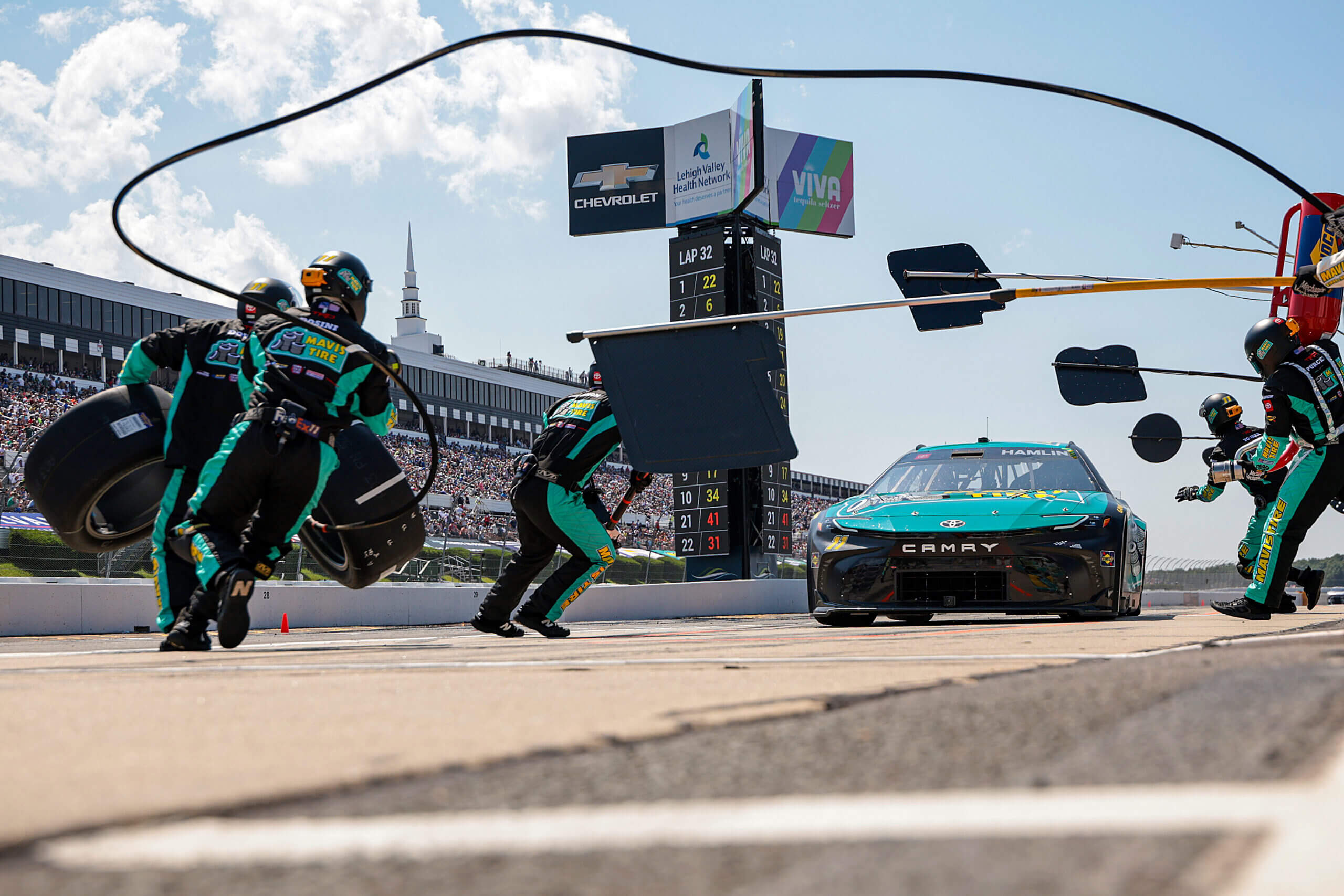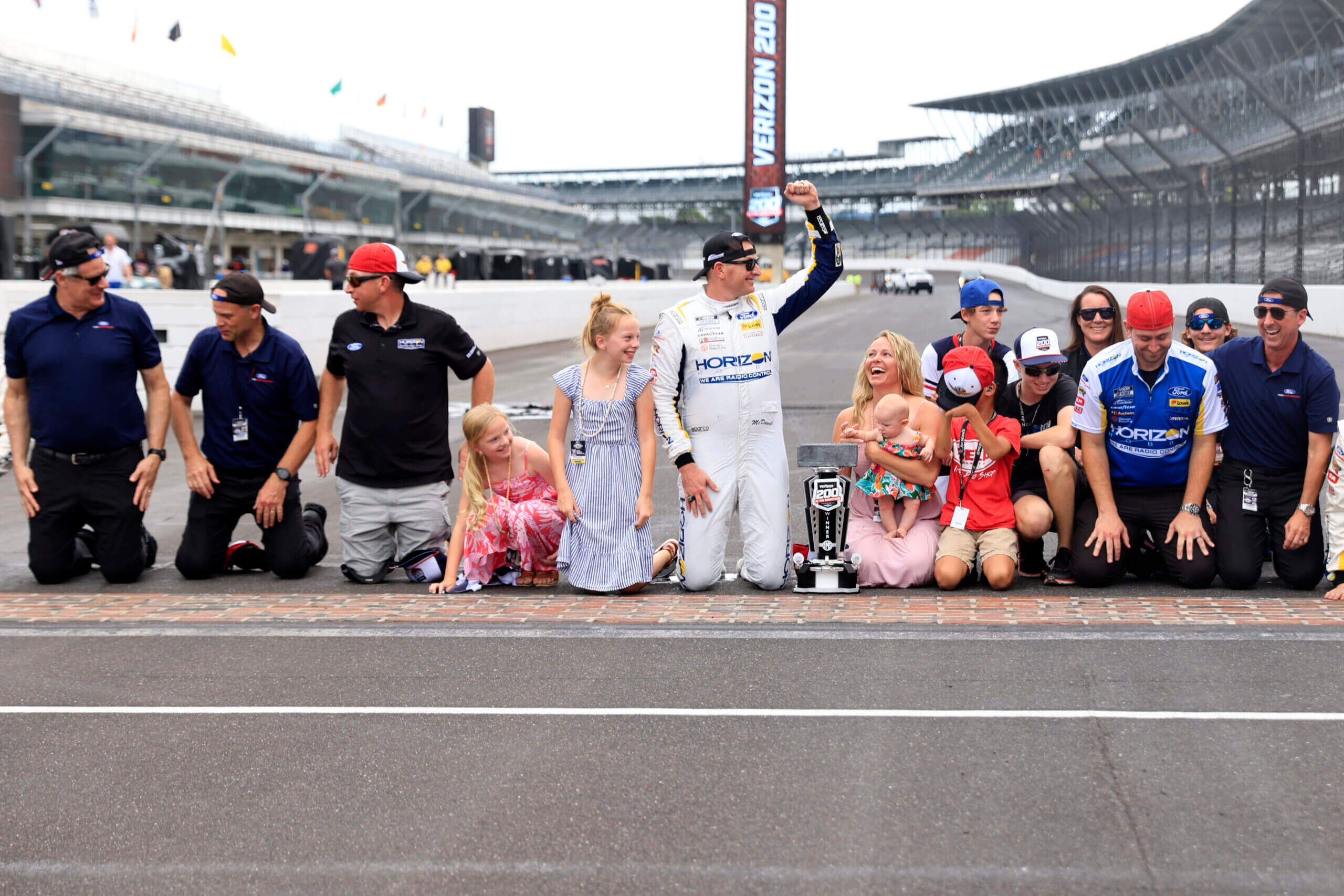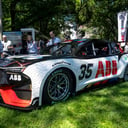Five thoughts after Sunday’s NASCAR Cup Series race at Pocono Raceway…
1. Take stock
Ryan Blaney is not on pace to reach career highs in important statistical categories like top-five or top-10 finishes in 2024. Blaney’s previous seasons have been marked by greater consistency in terms of average finishes.
But this year, and since the middle of the 2023 playoffs, Blaney has appeared to be a different driver. Namely, a winning driver.
When Blaney earned his first career victory midway through his second full-time season and won at Pocono Raceway in 2017, it seemed like many more trophies would quickly follow. He was a young prospect with a lot of potential, and it was hoped he would win multiple races each year.
Except that in his first seven and a half years in the NASCAR Cup Series, he won just seven times. And until his title run last fall, there was no convincing evidence that Blaney would be more than a once-a-year winner.
The perception has certainly changed. Blaney has now won five times in the last 14 months, including twice this season after Pocono — but he’s also been thisclose to have two more.
Blaney ran out of gas while leading on the final lap at World Wide Technology Raceway near St. Louis in June and narrowly lost one of the closest finishes in NASCAR history when Daniel Suarez beat him (and Kyle Busch) to the finish line in Atlanta in February.
More importantly, seeing Blaney running up front and regularly in contention for the win isn’t an unusual sight. Once firmly in the shadow of more established teammates Brad Keselowski and Joey Logano, Blaney is no longer just another driver on his own team. And with Keselowski’s departure to an organization still under construction and Logano’s relative lack of results since winning the 2022 championship (two wins in the last season and a half) — as well as Kevin Harvick’s retirement — Blaney, 30, has become a leader not just for Team Penske, but for all of Ford.
“When you’re young and you’re starting out, all you care about is putting your foot down and you lose sight of the end goal,” Blaney said. “I’ve tried to keep the same speed I’ve had for a while, but I’m also trying to shape my mind to say, ‘That’s not all that matters.’”
“Anyone can be fast. But can you do a full race? I really worked hard to do that, to become that type of rider.”
2. The fastest car tracker
Other cars have been overheated in recent weeks, winning three races in a row (Nashville, Chicago, Pocono). While Blaney led the most laps Sunday, he also benefited from a great strategy that gave him clean air and helped him turn a top-3-5 car into a win.
“We realised very early on that I thought our car was good enough to win the race, it was about being able to start on the front two rows,” Blaney said.
Blaney led the “Fastest Laps Run” category in NASCAR’s Loop Data (he had 22 of the fastest laps while Denny Hamlin had 17), but Hamlin had a slightly faster overall green-flag speed despite spending less time in clean air.
The hunch is that whoever had the lead was probably going to be hard to pass at the end, so we’ll say the faster car (Hamlin) didn’t win the race – although Blaney was certainly no slouch.
Fastest car score: Other cars 13, Fastest cars 10.
Fastest cars by driver: Christopher Bell 5, Denny Hamlin 4, Kyle Larson 3, Tyler Reddick 2, William Byron 2, Joey Logano 2, Michael McDowell 1, Martin Truex Jr. 1, Todd Gilliland 1, Ty Gibbs 1, Shane van Gisbergen 1.

Denny Hamlin may have had the fastest car on Sunday, but a great strategy from Ryan Blaney put Blaney on the winning track. (James Gilbert/Getty Images)
3. Questions and answers
Each week in this space we will ask a question and attempt to answer a question from the past.
Q: What are the real “crown jewel” races of NASCAR?
The Brickyard 400 returns this week after a three-year hiatus, and it’s worth wondering whether the hiatus has diminished the prestige of the long-running major tournament.
From this perspective, the answer is: absolutely not. On the contrary, the absence of the true NASCAR experience in Indianapolis has increased the affection of the drivers.
Take the Southern 500, for example. NASCAR executives once foolishly thought that moving the historic Labor Day weekend race from Darlington to Southern California was a good idea. Sure, there was still a race in Darlington, but holding the Southern 500 in April didn’t seem like a good idea.
Since Darlington returned to its traditional date in 2015 after a 12-year hiatus, it has once again become one of the most popular events in the calendar.
Many editions of the Brickyard have been so boring and attendance has dropped so much that it’s understandable why NASCAR wanted to try the Indianapolis road course. Especially in 2020, when the decision was made, NASCAR road racing was all the rage.
Additionally, NASCAR did not view the move as removing a major race from the schedule. When asked in 2020 by a reporter how the schedule would be reshaped with one less marquee race, NASCAR’s Steve O’Donnell objected to that premise.
“I don’t see why it’s one less jewel,” O’Donnell said. “The Brickyard, we’re going to run on the road course. It’s a crown jewel.”
But NASCAR made the mistake of assuming that drivers, crew members and fans would have the same prestige on the road course as they did on the oval. That wasn’t the case, and there was no replacement for the Brickyard on the NASCAR racing schedule (despite some rumors that the Bristol Night Race might take that spot).
Thankfully, the Brickyard is back and hopefully here to stay, regardless of its entertainment value. It’s simply too important a race to disappear, and it’s now reclaiming its place among the major races along with the Daytona 500, Southern 500 and Coca-Cola 600.
A: What is a “fair” race?
It was a topic raised in this column after Pocono last year, which saw the race-deciding Denny Hamlin-Kyle Larson incident.
Since then, the debate over the ethics of racing has subsided. Racing someone extremely hard is a given in today’s Next Gen climate, with very little give and take, whether it’s on restarts or even trying to stop a faster car from overtaking on a long run.
Blocking someone (whether by violent swerves or by using air in someone’s path), pinning them down the track, pushing them out of space against the wall… it has apparently become a more accepted part of the game, even if drivers don’t particularly like racing that way. In other words, most on-track aggression no longer seems to constitute a blatant violation of the rules of the road.
Still, some cases go beyond fair racing, depending on who you ask. Corey LaJoie appeared to shake off Kyle Busch for what he considered a second block Sunday, though replays don’t appear to show what LaJoie described (that Busch did it to himself, essentially).
But LaJoie told NASCAR.com’s Jessie Punch after the race that he had no intention of apologizing and wouldn’t have done anything differently. So, as is typical in NASCAR, which almost always avoids “avoidable contact” situations, it will be up to Busch and LaJoie to decide what they deem to be fair racing going forward.

This year, the NASCAR Cup Series is moving from the Brickyard road course to the oval, a widely welcomed change. (Justin Casterline/Getty Images)
4. NASquirks
After years of racing in oversized arenas that no longer reflected the current level of fan interest, NASCAR appears to be in much better balance these days. The so-called “right-sizing” trend, along with the resurgence of post-pandemic travel, has allowed NASCAR tracks to post six sellouts in 23 Cup Series races (including exhibitions) so far this season.
As an industry colleague noted, it is also helpful to consider “right-sizing” in terms of timing.
Pocono has sold out for the second straight season, something that once seemed ridiculous when the track hosted two 500-mile races six weeks apart. But now, with room for about 50,000 fans and only one 400-mile race per year — plus an impressive infield camping and fan zone experience — Pocono has become an interesting race to attend in the Northeast (Sunday traffic issues aside).
The Daytona 500 and Iowa Speedway’s inaugural weekend also sold out before the 2024 schedule was even set, Phoenix Raceway sold out its March race (the sixth consecutive sellout overall) and the Coca-Cola 600 at Charlotte announced a third consecutive sellout on the Wednesday before its race. Nashville Superspeedway also sold out for the third time in four years.
These races follow a 50% increase in sell-outs between 2022 and 2023, with some potentially sold-out events still to come this season.
5. Five at No. 5
Our mini power ranking after race #23/38 (including exhibitions):
1. Ryan Blaney (last time: 4): If Blaney doesn’t run out of gas at Gateway, he’ll suddenly have three wins in the last seven races. This show of strength on a big track can’t be ignored.
2. Tyler Reddick (last time: 5): He now has seven top-10 finishes in the last eight races and should have won two of the last three.
3. Denny Hamlin (last time: 2): Hamlin has had a tough time, but when it came time to step up to the plate on a big track, the No. 11 team brought a fast car. Hamlin should be the favorite heading into Indianapolis, which he has never won.
4. Kyle Larson (last time: 3): The No. 5 team has now gone four consecutive races without leading a lap for the first time since July 2022. But the speed is still there, which is the most important factor at this time of year.
5. Christopher Bell (last time: 1): Oddly, Bell was not a factor at Pocono and finished 12th – this after crashes at Nashville and Chicago spoiled what could have been good results.

GO FURTHER
NASCAR Built an Electric Vehicle, But Will It Ever Be Used in Racing?
(Top photo of Ryan Blaney celebrating Sunday’s victory: James Gilbert/Getty Images)